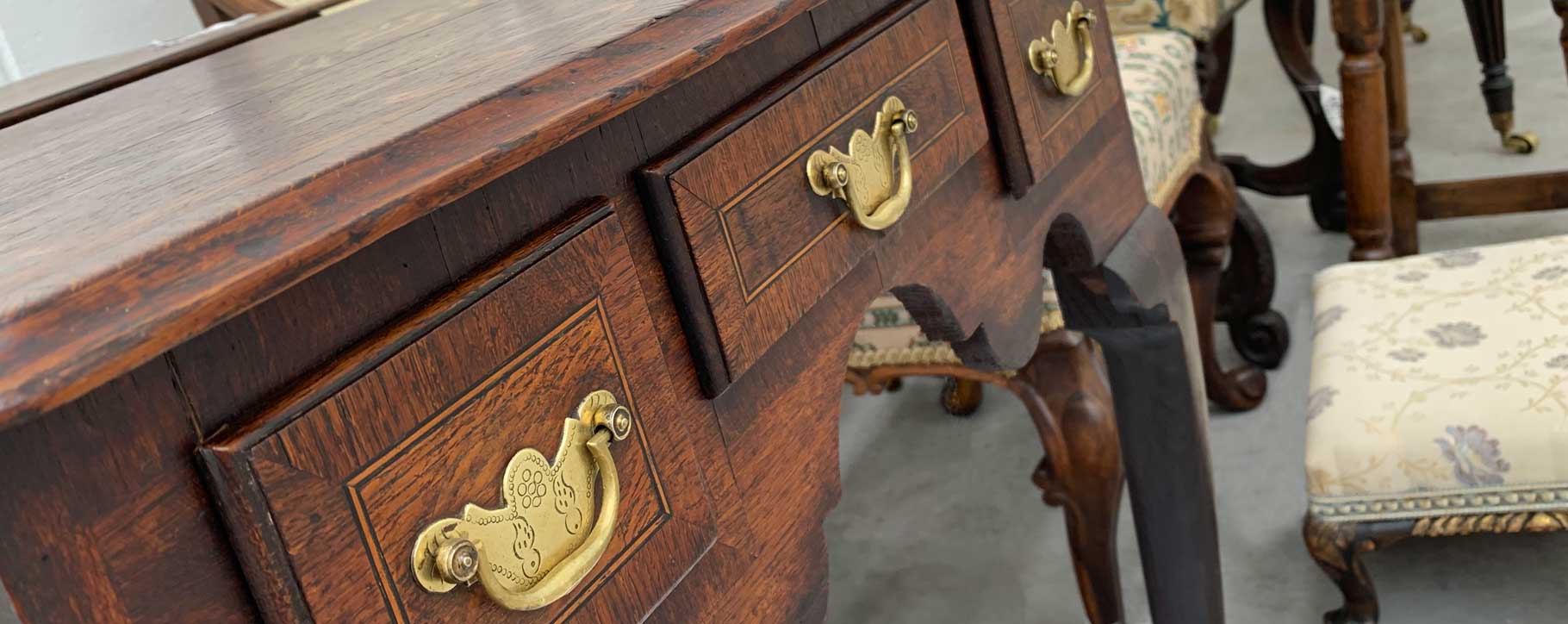
The long history of wooden furniture in the UK has meant that antique pieces have often survived due to their innate durability. This means that if kept in good condition, they should be able to withstand use for centuries to come. However, the lack of quick intervention following water exposure could begin a process of organic decay.
As antique furniture is often so robust, it is in many cases still used as an everyday piece in the home. But it is in this durability that the most common form of damage occurs. Every day accidents may lead to a visual disturbance, such as the familiar rings left by mugs, cups, teapots, vases, or decorative objects. Further staining can occur following a spillage, household leak or flooding. This unsightly damage may detract from the value of the piece, as well as pose a threat to its stability. Water stains on a wooden surface can be restored professionally, protecting the furniture and returning the aesthetic appeal. This type of conservation also benefits from a fast response to limit the amount of intervention that is required. A quick call to our team will also allow us to give swift advice or protective solutions in order to reduce the risk of common damage repeating itself.
Different types of wood can face various levels of damage from moisture absorption or surface staining. Furniture is often crafted in a way that curves and constricts the botanical flow of the timber. This natural force can be disturbed by the environment and the level of moisture it absorbs.
A dry atmosphere can cause the wood to cup or shrink, often disturbing the joins and dimensions of a table, chair, cabinet or chest of drawers. An even level of temperature and humidity, as well as the application of boiled linseed oil and turpentine, will help to keep wooden pieces at a healthy level of moisture.
When the levels of moisture are compelled in high humidity or following an incident of flooding or water damage, the wood will begin to expand and swell as it absorbs too much. Untreated water damage in wood can lead to discolouration, staining, rot and the eventual loss of the piece if it is not handled swiftly and with professional care.
Understanding the history and material of an item of furniture will help in the risk assessment of the piece. In this guide, we will cover the different styles throughout history, including the variety of timber which has been used and any vulnerabilities this may face.

Pre-renaissance
Before the 16th century, furniture in the UK antique market will most likely be made from oak and have a heavier, sturdy appearance with basic embellishments. Oak is native to the UK and would have been readily available, as well as being very durable. Many pieces survive today due to a strong resistance to rot and woodworm but will require assessment and possible restoration work following water exposure to ensure longevity.
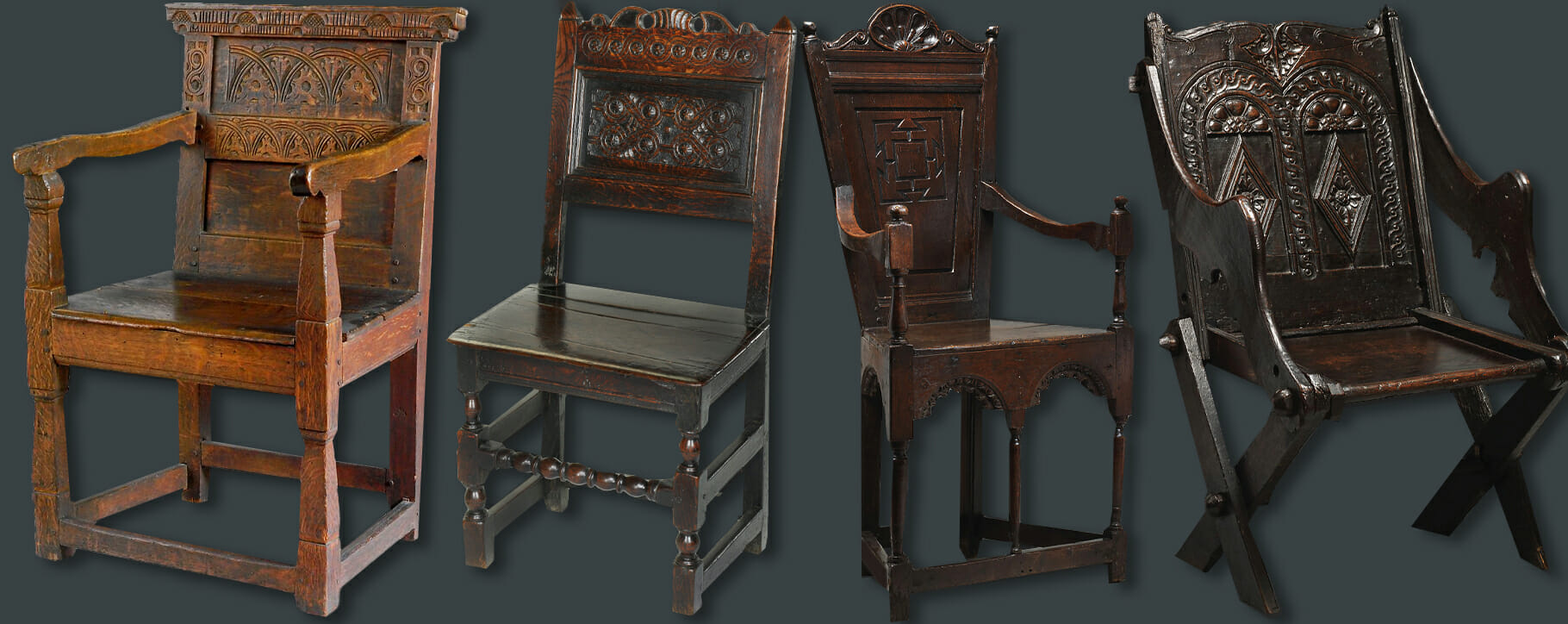
Baroque
In the 17th and 18th centuries, global travel encouraged the use of exotic varieties of hardwood. As this was more expensive than native timber, oak was often styled and stained in order to replicate more fashionable mahogany, rosewood, ebony or satinwood. Real mahogany resists shrinking due to humidity and water exposure very well. This is as a result of the humid climate and origin it is derived from, however, it is still vulnerable to decay if it is left in damp and untreated conditions.
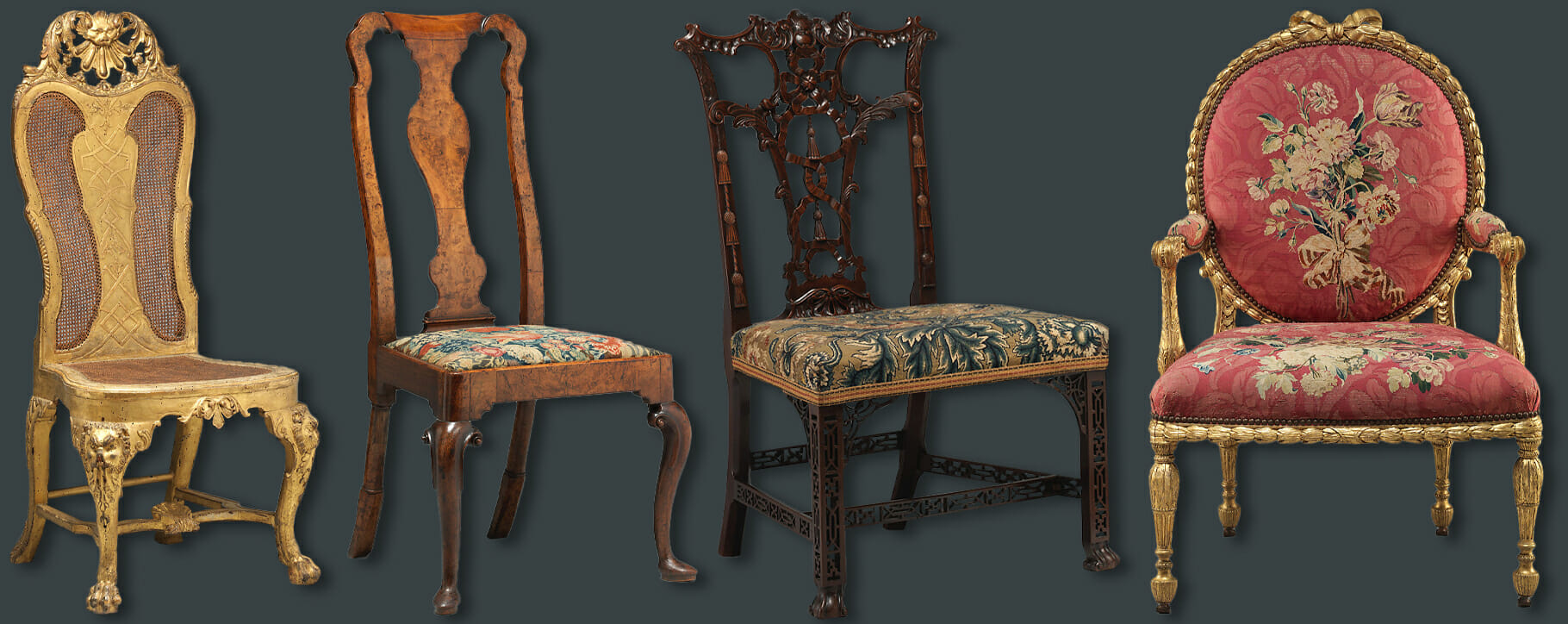
Marquetry
Marquetry became popular during the 18th century, a technique of inlaying different coloured veneers into areas of the wooden structure to form a pattern or pictorial scenes. The delicate and intricate nature of marquetry pieces makes them very vulnerable to water exposure. Whilst staining will create a visual impact that disturbs the details of the artwork or pattern, drastic damage may occur from the wood reacting to the moisture, causing the elements in the marquetry areas to lift away or curl. This requires a quick call to our conservation team, who will work to save as much of the original inlay as possible. Where a piece cannot be re-adhered or is lost entirely, new pieces (which are carefully colour-matched and created with artistic skill) can be set into their place to ensure there is no visual disturbance.
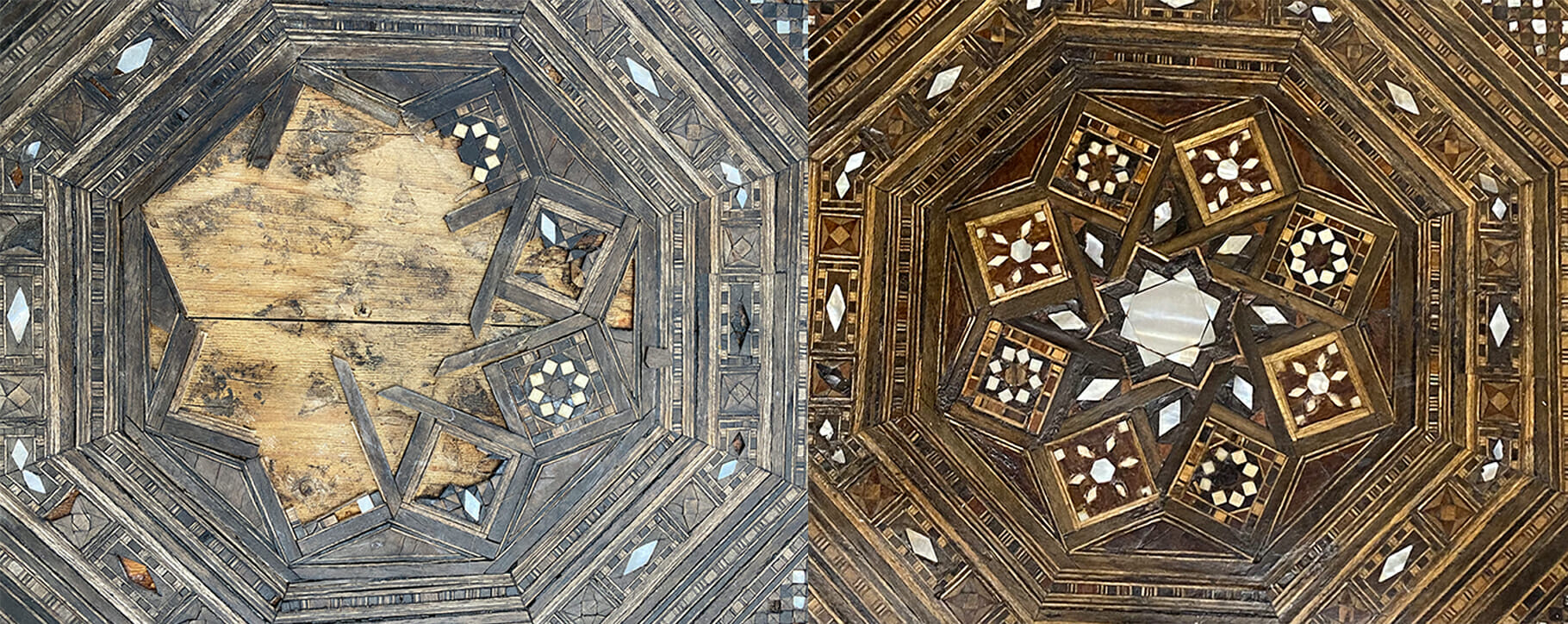
Queen Anne Style
Popular styles from the early 18th century are referred to as ‘Queen Anne’ or ‘William and Mary style’ after the reigning monarchs. Usually dating from 1700 to 1725 these late baroque pieces were often made of walnut, with some examples also using yew, poplar, cherry and maple. Walnut is very resistant to shrinkage and warping if it is swiftly treated following water exposure. Whilst yew and cherry can be fairly durable when it comes to rot, maple is at high risk.
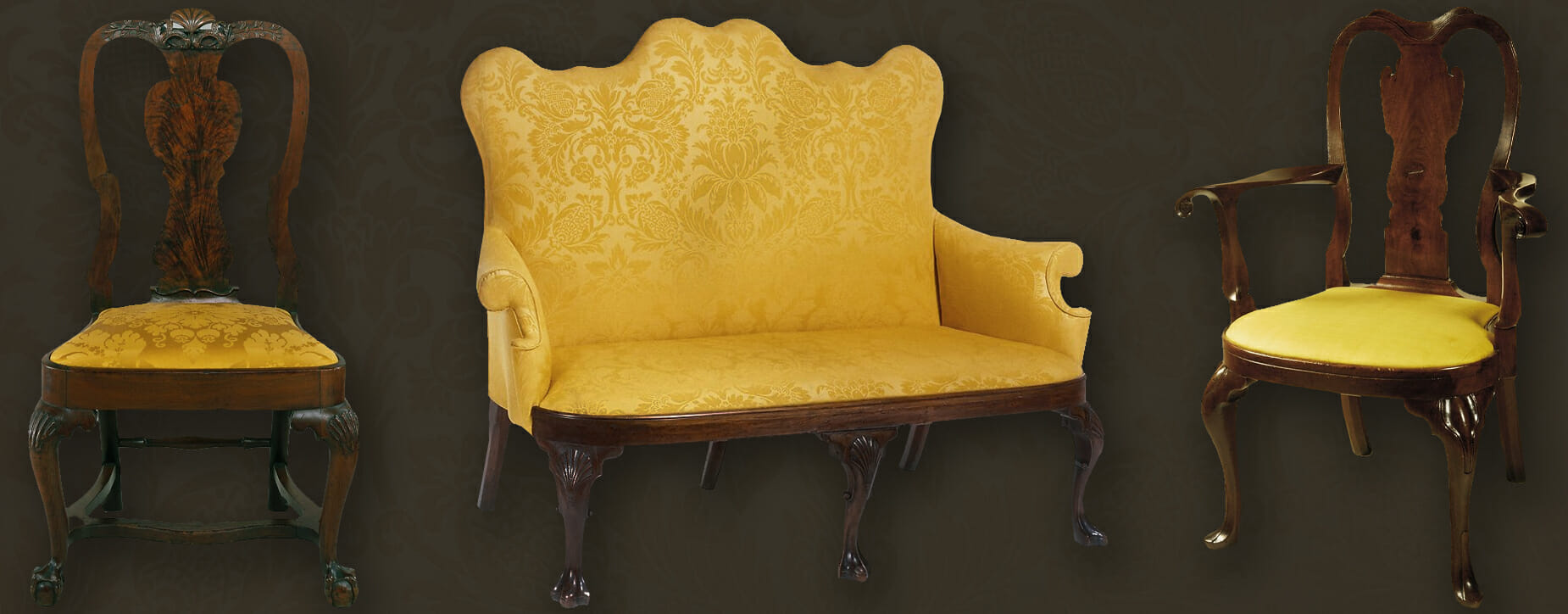
Regency
During the Regency period, a speckled variety known as ‘bird’s eye maple’ was often used on veneers and interiors. You may also find this type of wood in Victorian and Edwardian interior design. This is an interesting variety as it is created from a sugar maple, which has been purposely grown in shaded and unnatural conditions. This causes it to create constant new buds to reach sunlight, only to have them reabsorbed, leaving an unusual pattern.
Veneer surfaces are often finely polished and the pattern of the wood grain is often a large feature. This means that any marks or stains can create a severe detraction from the aesthetic quality of the piece.
Thin layers are also a factor in veneer furniture, creating a high risk from water exposure which causes them to easily warp or lift away. Fortunately, the original shine and the natural decorative pattern can usually be restored by our trained conservators and watermarks can be professionally treated and reduced.
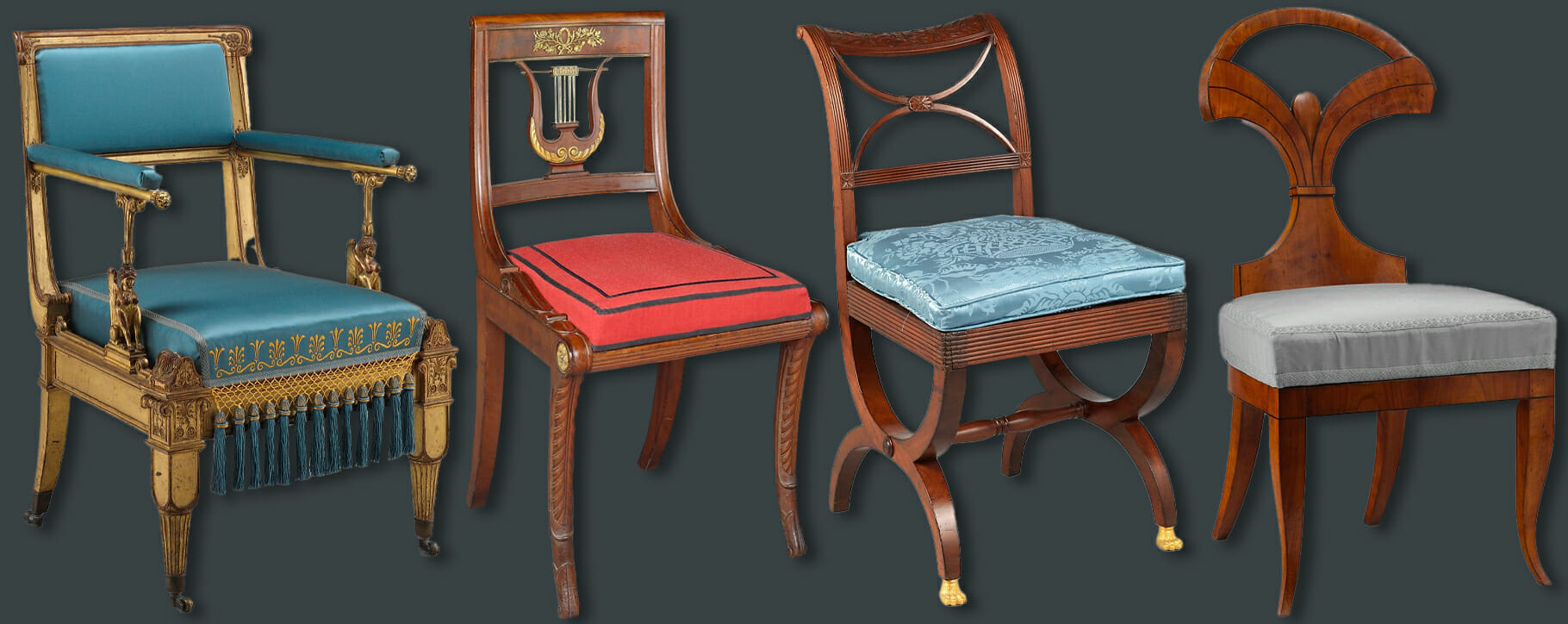
Victorian and Edwardian
Later 19th-century pieces often feature a mixture of upholstery and many types of wood including teak, satin birch, pitch pine, and significantly saw a revival in oak furniture. The arts and craft movement brought back the use of this traditional material, and new types of finishes were also introduced due to new industrial methods. This includes pollard oak, a variety that uses the pattern caused by fungal growth on the timber. This type of wood needs to be machine cut for a good finish, so it is an indication that the furniture that this pattern resides on was produced during or after the industrial revolution. Like bird’s eye maple, this is often used as a veneer and can be easily disturbed by water damage through lifting and warping. Upholstery on such pieces may also wear down over time and require intervention from our textile conservators who can protect, restore or replace such areas.
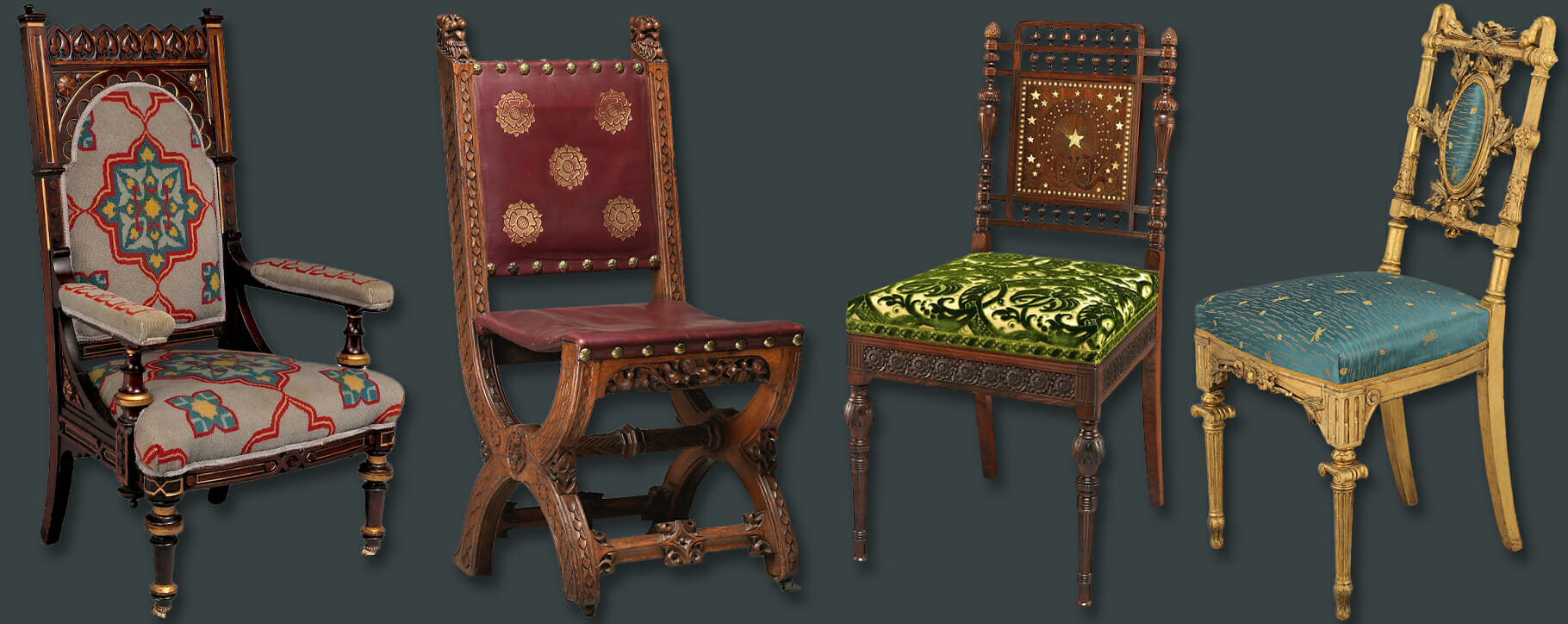
Mid-century modern
The introduction of different styles and materials in the 20th century meant that wooden furniture was not always as popular. However, simplistic and sleek mid-century modern designs which often date between the 1930s-1960s still have a huge appeal today. Genuine mid-century modern designs are most often made from solid teak, rosewood or walnut. This is sometimes in combination with upholstery. Both the wooden element and the textiles of mid-century modern furniture can be restored with conservation methods that are sensitive to the historic and artistic integrity of the piece.
The popularity and pricing of these pieces mean that following a disaster, they should always be considered for assessment and restoration in the way that any older antique would be. With common mid-century pieces being items in regular use, such as a coffee table or side table, these may have faced decades of light staining from cups and mugs, building up over time. To bring back the visual quality and possible monetary value to the piece, it is recommended that this type of surface disturbance is professionally restored.
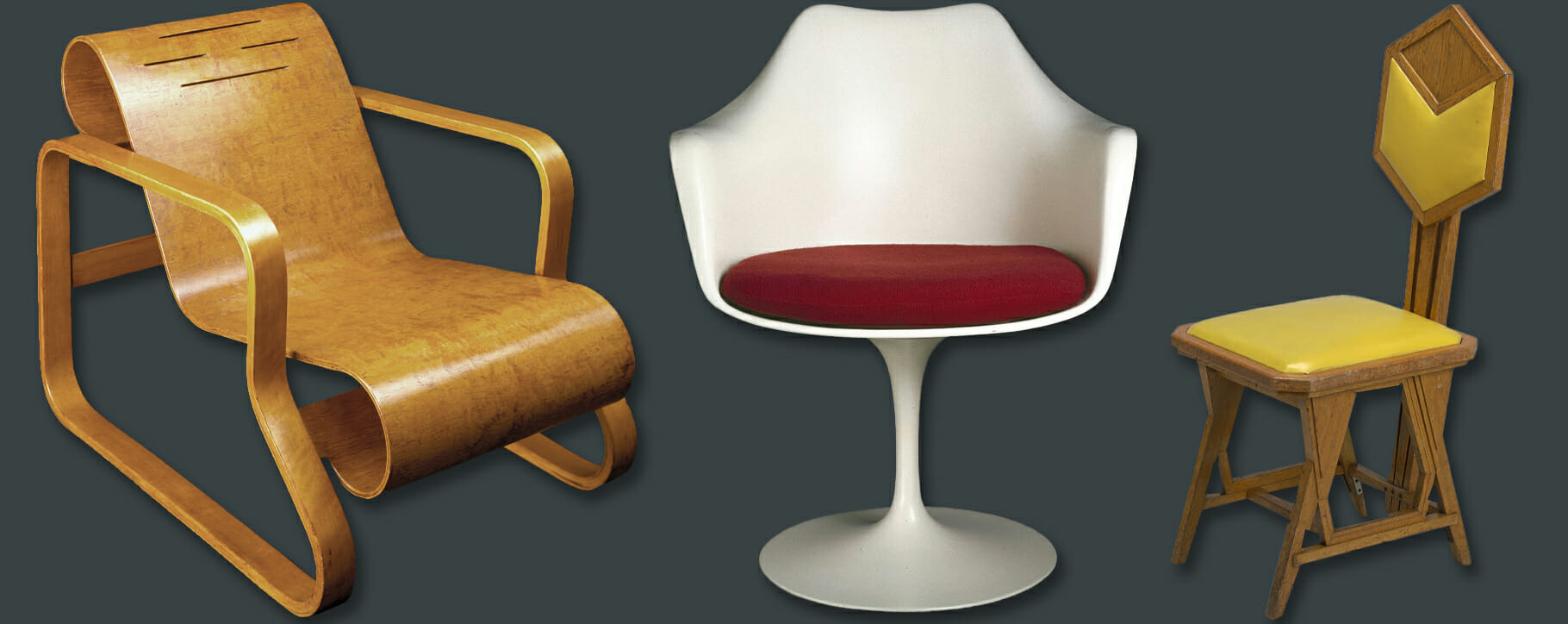
What to do if furniture is affected by flooding or exposure to water?
Wooden furniture can be put at risk of deterioration and decay following incidents of flooding, leaks and any other kind of drastic exposure to water, dampness or high humidity. They can also be stained by watermarks from spills or rings left by mugs, glasses or vases.
Luckily, swift and easy steps can be taken to ensure the protection of such pieces. Firstly, when in everyday use for drinks or dining, ensure that a heat-absorbing coaster or placemat is used to protect the surface. If accidental spillage occurs, soak up the excess water as soon as possible and then remove the damp cloth or towel from the surface, also allowing it to dry naturally.
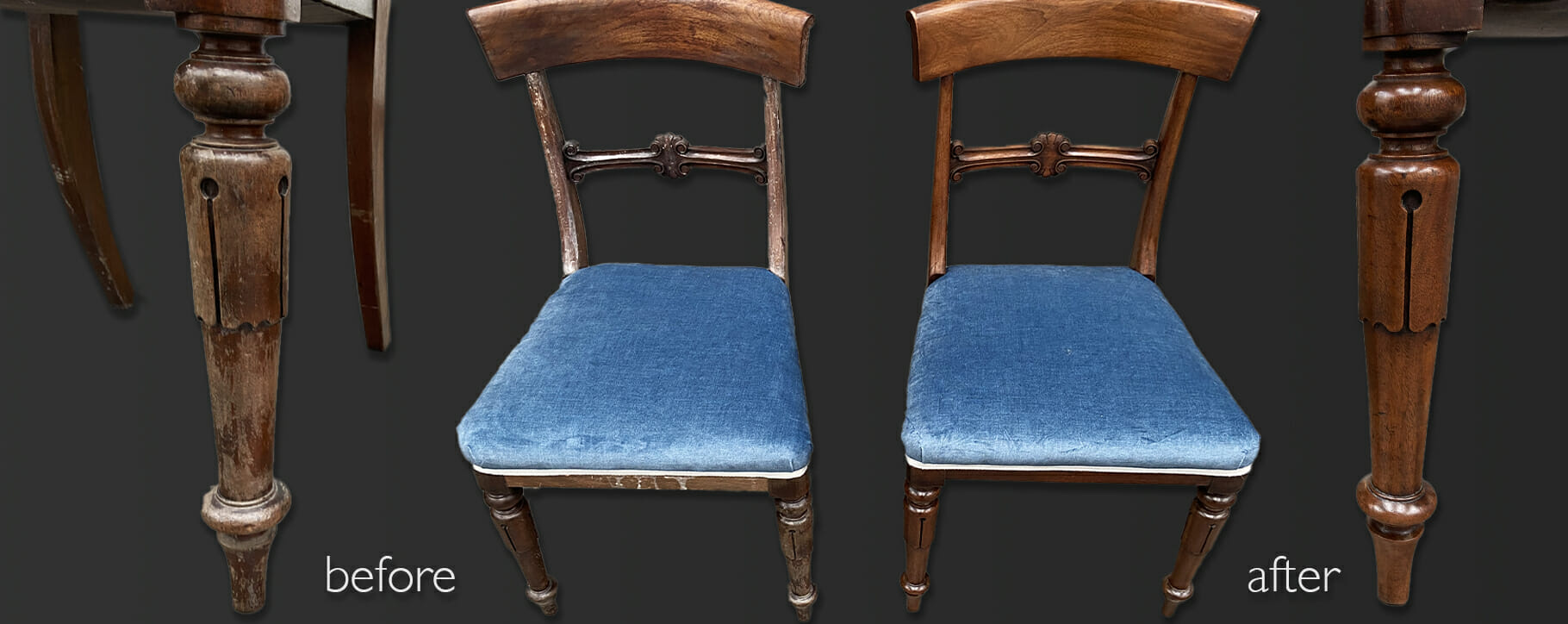
Following a flood or leak, it is also important to allow the piece to dry slowly in sunlight or in a well-ventilated room. It is essential that wood dries gradually, as a quick-drying process will cause the material to move, warp, and crack. Avoid the use of industrial drying units, household heaters, or hairdryers. It may take patience to allow the piece to dry naturally, but this is essential to its preservation following water exposure.
Collect any pieces which may have become loose or fallen away, this is especially important for furniture which has inbuilt decoration from marquetry, beaded detail or extremities which may have broken off during or following the disaster.
When the piece has been removed from the wet location and placed in a suitable environment, contact our team for advice and the appointment of restoration work to be carried out. The earlier we are contacted, the less damage will have occurred to the piece, meaning lowered levels of conservation treatment and cost.
If a piece has been recently acquired which shows evidence of previous exposure to water, this can be found in the warping or rotting of areas and staining. If this gives cause for concern, our trained conservators can assess the piece and indicate whether it requires any intervention. If the piece has watermarks that have left a visual disturbance, a dark mark will indicate an old stain, whilst a lighter one would indicate that this was recent and the moisture is still near the surface. Our conservators can professionally restore these areas to bring back the original finish.
How is wooden furniture restored?
Following the slow and natural drying process, a piece of furniture will be carefully cleaned of any dirt and contaminants. This is important not only due to the appearance of the piece but in removing the contamination from the water which might have contained damaging or acidic elements. Without intervention, these contaminants would deteriorate the wood over time. Unlike home cleaning methods, our conservators use small and precise swabs in areas that are hard to get to, using solutions that will fully eliminate any harmful contaminants and are tailored to the individual item of furniture.
Areas of damage can then be fully addressed, including breakages, staining, warping, chips, dents, scratches and scuff marks. These areas can be stabilised with new pieces that seamlessly colour match the original, or salvaged pieces can be put back into place if they are strong enough. Any metal joins, stringing or elements at risk of rusting can also be treated or removed if they have fully deteriorated.
Any loss of colour or decoration can be restored with new varnish which has been carefully selected to match the historic tones. The polish can be rebuilt with a wax finish, bringing an even finish and the original shine back to the piece.
If the wooden furniture has elements of inbuilt decoration, such as delicately carved areas or marquetry, this can be replaced or re-secured. Loose pieces should always be saved where possible, but if they are missing our conservators are able to create the features where required. Veneer layers can also begin to lift away, warp or bubble following water exposure, this can also be replaced or re-secured depending on the level of damage.
Once the restoration is complete, the furniture should be free from any rot or vulnerabilities connected to its water damage.
If you have a piece of wooden furniture that has faced recent or past water damage, read more about our antique furniture restoration online, request a free quote or get in touch with our team on [email protected] for helpful advice and an assessment from our trained conservators.






